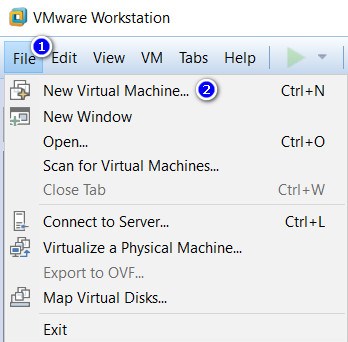Jul 04, 2017 Export VM to OVF using OVF Tool. Export VM to the OVF process is similar to exporting VM to OVA. Enter ” ovftool.exe vi://” with the VM path and with a destination directory. By default, OVF Tool exports VM to.OVF file. So, we don’t need to specify the.OVF file extension here. Ovftool -allowExtraConfig VMware-vCenter-Server-Appliance-6.7.0.2721OVF10.ova VMware-vCenter-Server-Appliance-6.7.0.2721OVF10.ovf. Step 2 - We need to add an additional line to the network section of the OVF with the desired MAC Address as shown in the example below. Import and export of OVF packages into a vApprun 1.0 workspace. How: Download and Install the VMware OVF Tool. Downloading and installing the VMware OVF tool to export VMs is a piece of cake, however, it is my style to take nothing for granted. When you export a virtual machine as an OVF file, you create a directory that contains an OVF file and the virtual disk files. You might consider an OVF as an archive of all the files that belong to the OVF directory. OVA is a single file distribution of the same OVF file package. The OVF and OVA formats offer the following advantages.

You can import an Open Virtualization Format (OVF) virtual machine and run it in Fusion. You can import both .ovf and .ova files.
Fusion converts the virtual machine from OVF format to VMware runtime (.vmx) format.
Ovf Vmware For Mac Installer

OVF is a platform-independent, efficient, extensible, and open packaging and distribution format for virtual machines. For example, you can import OVF virtual machines exported from Workstation Pro into Fusion. You can import OVF 1.x files only.
You can also use the standalone OVF Tool to convert an OVF virtual machine to VMware runtime format. For information about using the OVF Tool, see the OVF Tool User Guide.
Download or copy the OVF virtual machine file (.ovf or .ova file) to a location that is accessible to your Mac.
Procedure
- Select File > Import.
- Click Choose file and browse to the .ovf or .ova file and click Open.
- Type the name for the imported virtual machine in the Save As text box and indicate where to save it. The default destination is the Virtual Machines folder created by Fusion.
- Click Save. Fusion performs OVF specification conformance and virtual hardware compliance checks. A status bar indicates the progress of the import process.
OVF is a file format that supports exchange of virtual appliances across products and platforms. When you export a virtual machine as an OVF file, you create a directory that contains an OVF file and the virtual disk files. You might consider an OVF as an archive of all the files that belong to the OVF directory. OVA is a single file distribution of the same OVF file package.
The OVF and OVA formats offer the following advantages:
- OVF and OVA files are compressed, allowing for faster downloads.
- The vSphere Web Client validates an OVF or OVA file before importing it, and ensures that it is compatible with the intended destination server. If the appliance is incompatible with the selected host, it cannot be imported and an error message appears.
- OVF and OVA can encapsulate multi-tiered applications and more than one virtual machine.
Exporting OVF or OVA templates allows you to create virtual appliances that other users can import later. You can use the export function to distribute pre-installed software as a virtual appliance, or to distributing template virtual machines to users. You can make the OVF or OVA file available to users who cannot access your vCenter Server inventory.
Download Vmware Fusion For Mac
Deploying an OVF or OVA template allows you to add pre-configured virtual machines or vApps to your vCenter Server or ESXi inventory. Deploying an OVF or OVA template is similar to deploying a virtual machine from a template. However, you can deploy an OVF or OVA template from any local file system accessible from the vSphere Web Client, or from a remote Web server. The local file systems can include local disks (such as C:), removable media (such as CDs or USB keychain drives), and shared network drives.

